Cornhole is a pastime of summer. It’s a fun game to break out when the family is outside or when friends get together to share a laugh. Tailgating parties, barbecues, and beach visits are better with this inexpensive game.
For those of us that have a DIY streak, the fun can go even deeper. Making a cornhole board saves money and can turn recycled wood into a game. There are all sorts of inspirations to discover from the designs others have posted online for free — waiting for another creative enthusiast to use them.
Important Details to Consider When Building a Cornhole Board
Building a cornhole game board comes with a few considerations when you’re drawing up the DIY cornhole plans. Once you have these details in mind, coming up with your cornhole board gets much easier.
Cornhole Board Size
According to the American Cornhole Association, a standard size cornhole board is 47.5 to 48 inches long and 23.5 to 24 inches wide. Also, the top of the board should be one foot off the ground when you’ve got the board propped up for play. Regulation sizes exist for the thickness of the board and the width of the edges, too.
Of course, when you’re building your own easy cornhole board plan, the sky’s the limit on what size or shape you want to use. You just have to decide how regular or crazy you want to be with your designs!
Types of Material to Use
Most cornhole boards are made out of wood. That’s because wood is a cheap material that’s easy to work with. It’s also easy to finish so the board’s surface isn’t too slick or sticky for proper play.
However, there are cornhole sets that are made of plastic, PVC, or aluminum. These are harder to shop into a cornhole board for the average enthusiast. But they offer a uniqueness in their design you don’t see in wood.
Cornhole Opening Location
The hole is 9 inches from the top of the board and 12 inches from either side edge. It’s supposed to be circular to emphasize the aim you should be putting on the center of the board.
This detail of the board is harder to change. You don’t want to move the location of the hole much, or you run the risk of making the game too hard or too easy.
Other Considerations
The details above are the key elements to cover in your DIY design. If you want to go further in your draft, there’s plenty of other details to consider.
- Visual Design: What sort of colors or patterns will you put on your board?
- The Beanbags: A cornhole set isn’t complete without the bags. What design or fabric will you use for yours?
- Storage: When you aren’t using your cornhole set, how is it stored? Does it fold up? Will you make a covering to protect the finish?
Once you get into the fine details of your design, you find all sorts of little things to add your own style to your boards.
Free Cornhole Board Plans to Consider
We’ve found a bunch of free cornhole board plans for inspiration and guidance. Use these plans to get your own DIY designs going!
Blue and Yellow Cornhole Plans
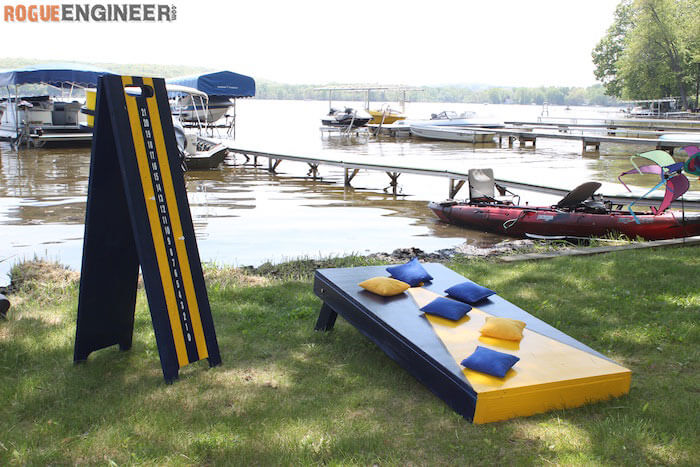
Jamison from Rogue Engineer has a great tutorial on DIY cornhole boards. His article has a materials list, visuals, and a step-by-step walkthrough on building the boards from start to finish.
The highlights of Rogue Engineer’s article are the printable PDFs and the score tracker plans. The PDFs help guide you through the process without having the blog article pulled up. Meanwhile, the score tracker design is a fun addition to the game — and it has a drink holder!
Pallet Cornhole Plans
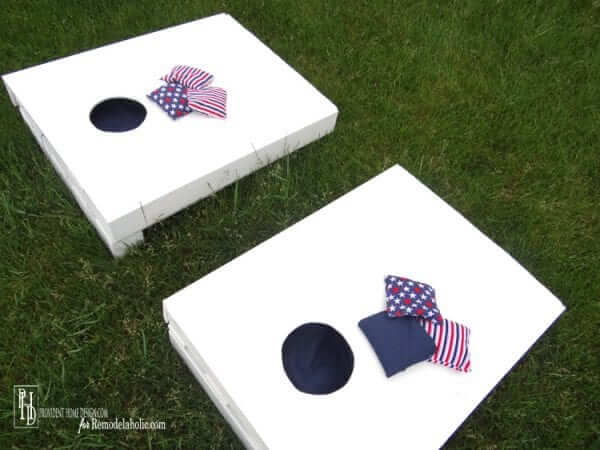
At Remodelaholic, Cassity turned a wooden pallet into the foundation for a set of small cornhole boards. She mentions that her design can scale up to a regulation size if you have two pallets. However, she showcases the one-pallet design in this article.
Cassity also goes over how to make your own bean bags for the cornhole boards.
Related Post: 35 Awesome Pallet Projects
American Flag Cornhole Plans
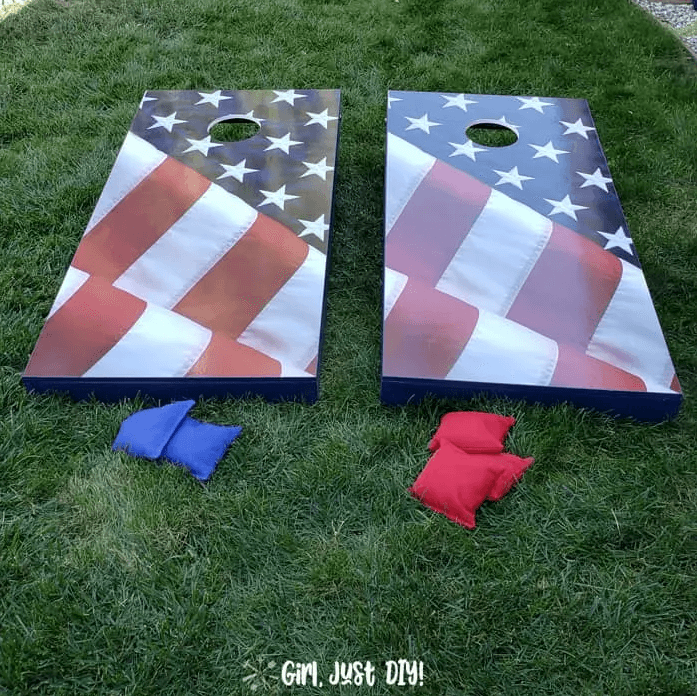
Toni at Girl, Just DIY goes over her summer project of making a cornhole board from scratch. She covers her tools and materials, and has pictures galore from her workshop during the process. Her plans for the boards are downloadable as a PDF, too. Toni’s detailed explanation is what makes this tutorial a great source of inspiration for your own project.
Basic Cornhole Plan
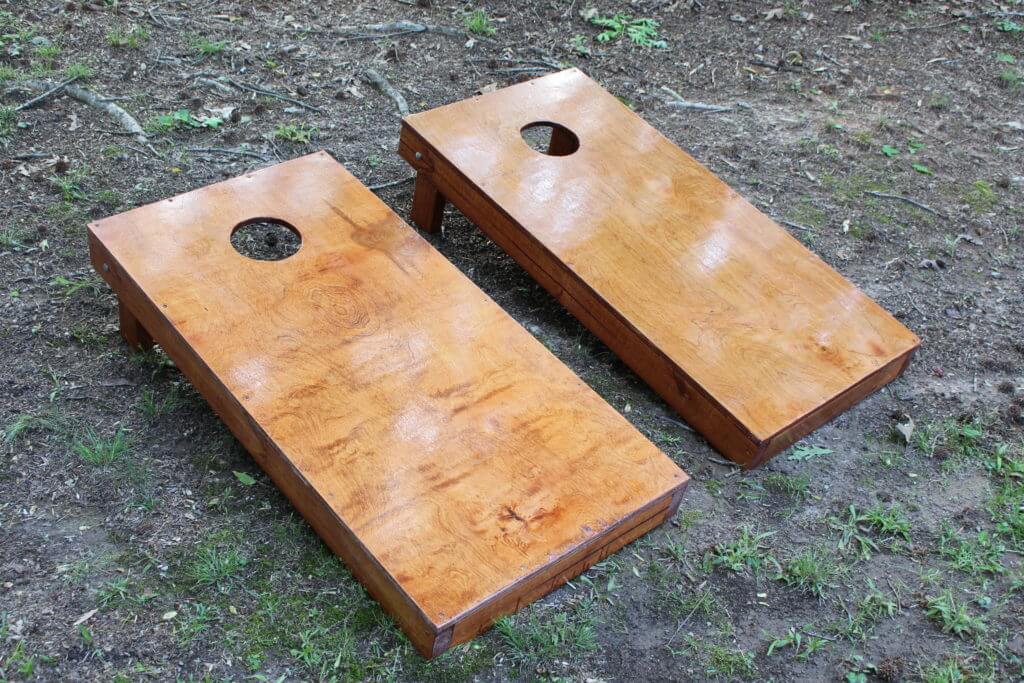
Over at Four Oaks Crafts is Stephen, a woodworker who loves posting woodworking projects like his DIY bean bag toss boards here. Stephen is meticulous with his details and measurements to make a standard dimension cornhole board. He talks about the wood he uses, and finishes for the wood, to make it weather-resistant.
Custom Cornhole Boards Plan
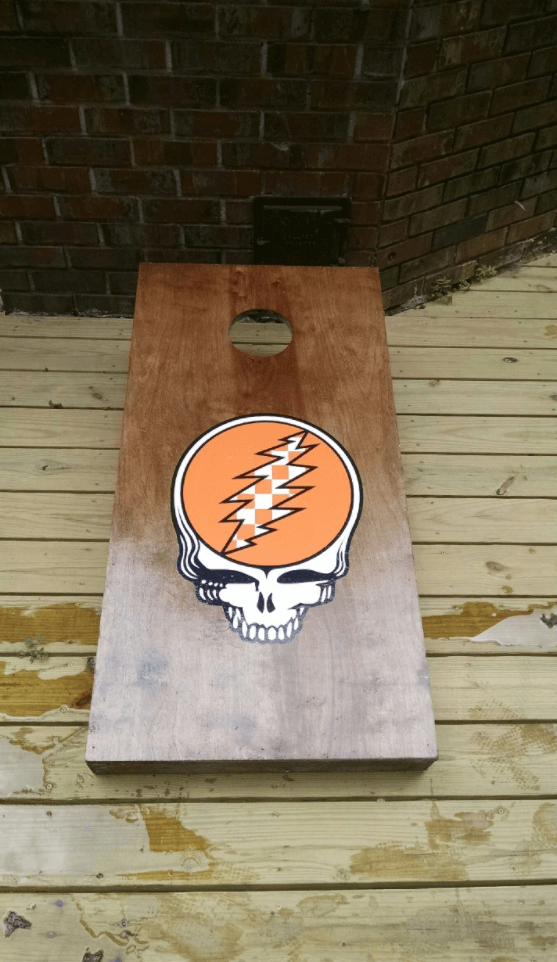
Erica from the Designing Vibes has a great overview of her collegiate cornhole boards. She goes over the materials, tools, and stains that she uses to treat the wood of her boards. Her article also has some advice for those that want to put a custom decal on their board. Definitely worth the read!
Modern Blue Cornhole Board Plans
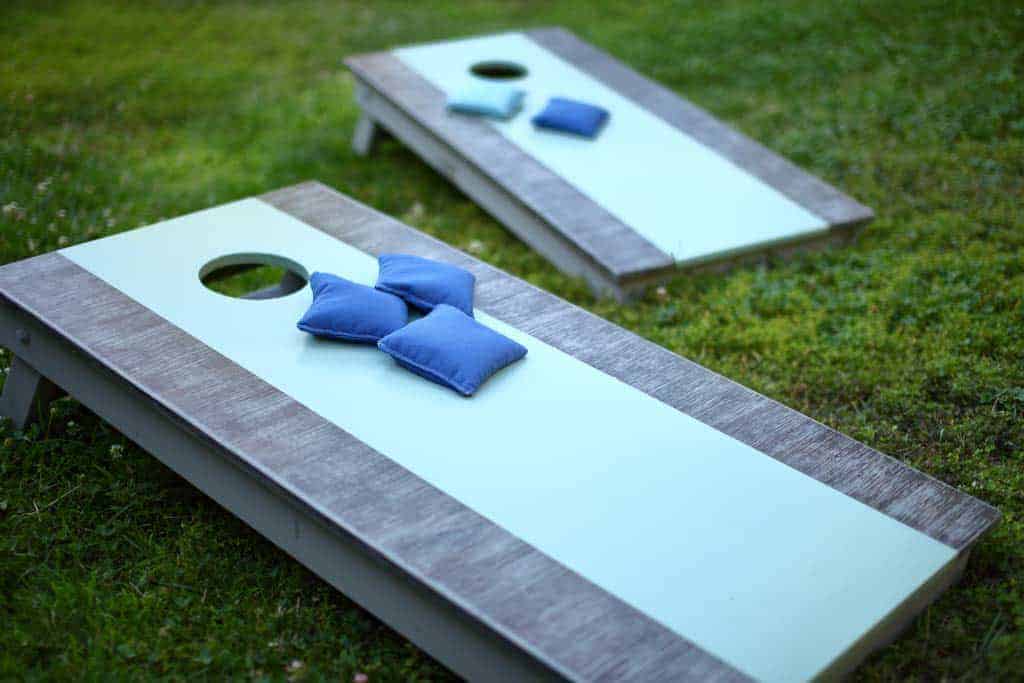
Viktor from The DIY Plan blog has a design for a two-tone cornhole board using wood. Although his PDF plans are behind a paywall, he does go over the plans in his article. They include pictures of the process, materials, and tips for making the cornhole boards as easily as possible.
White and Red Cornhole Plans
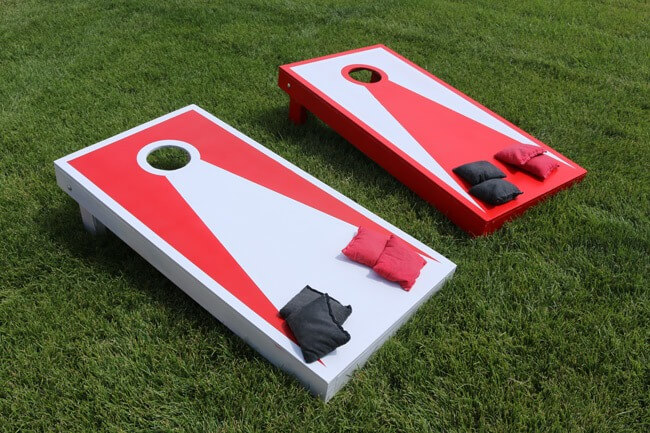
DIY Pete’s Pete Sveen has plans for a 2-tone cornhole board, but with a different approach to the design. Instead of using brush paints, Pete uses painter’s tape and spray paint to create cornhole boards with inverted colors between the boards. This contrast makes for a flashy design with pictures of the process to help.
Hand-Painted Cornhole Plans
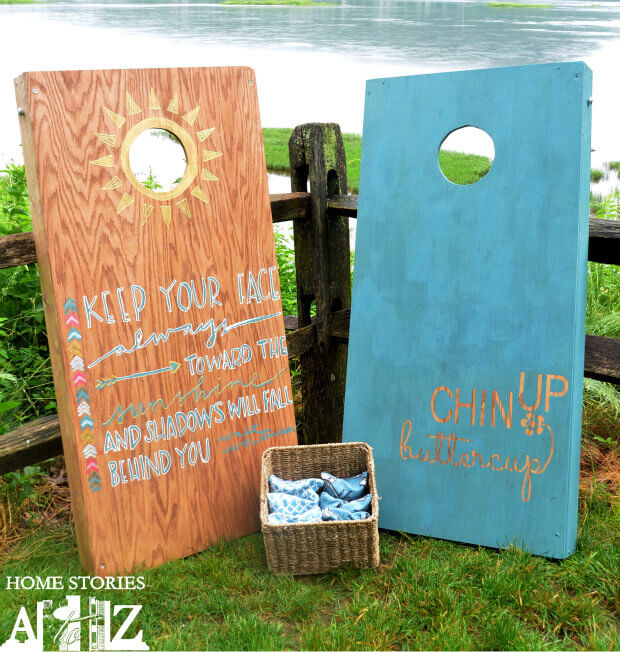
Beth Hunter from Home Stories A to Z has a blog article featuring her hand-painted design for her DIY cornhole boards. She has some pictures of the process, but the main inspiration here is the inspirational quotes she puts on her boards. Goes to show how personalized your DIY boards can get.
Simple Cornhole Board Plans
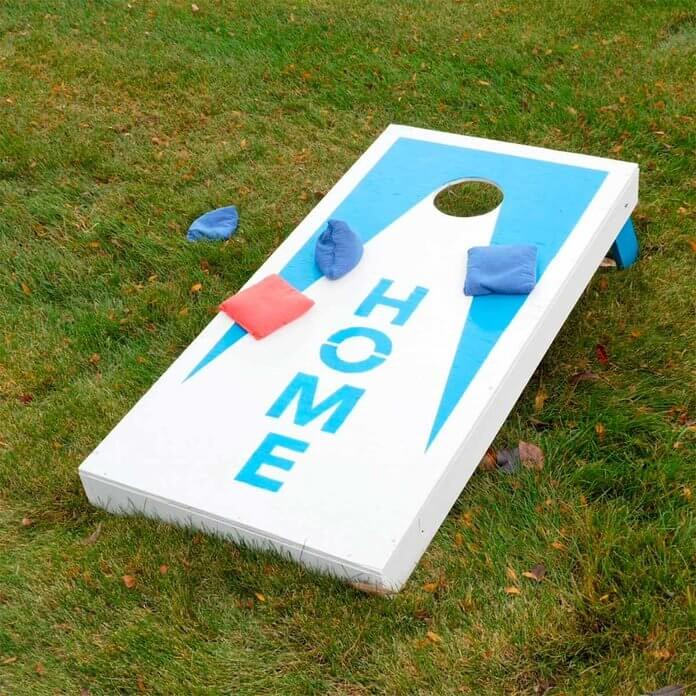
Matt Boley has an article on Family Handyman going over how to make a simple cornhole board. His board uses a combination of multiple colors and painted text to set it apart from the other designs on this list. He emphasizes that you try paint as well.
Plywood Cornhole Board Plans
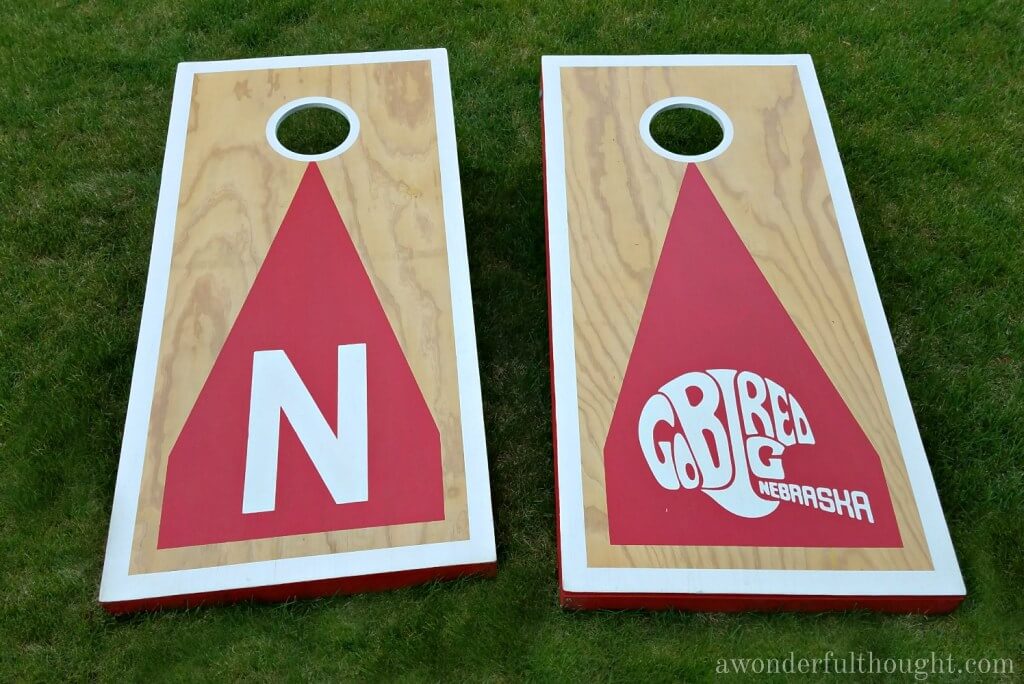
A Wonderful Thought has an article from the blog owner Kimberly about her DIY cornhole boards. The walkthrough of the design is heavy on text, so it’s great for folks that prefer to read their directions over using pictures. Kimberly is precise in her measurements. It’s a good reminder to do the same for your own projects, no matter what design you end up making.
Cornhole Game Set Plans
Jennifer Stimpson on This Old House goes over a design from some of the woodworkers on that site, including some unique choices for their boards. These cornhole boards have a handle installed on the side of them, making them easier to carry. Jennifer also goes over the money and time cost of making the boards so you can fit this project into your budget.
DIY Backyard Cornhole Plans
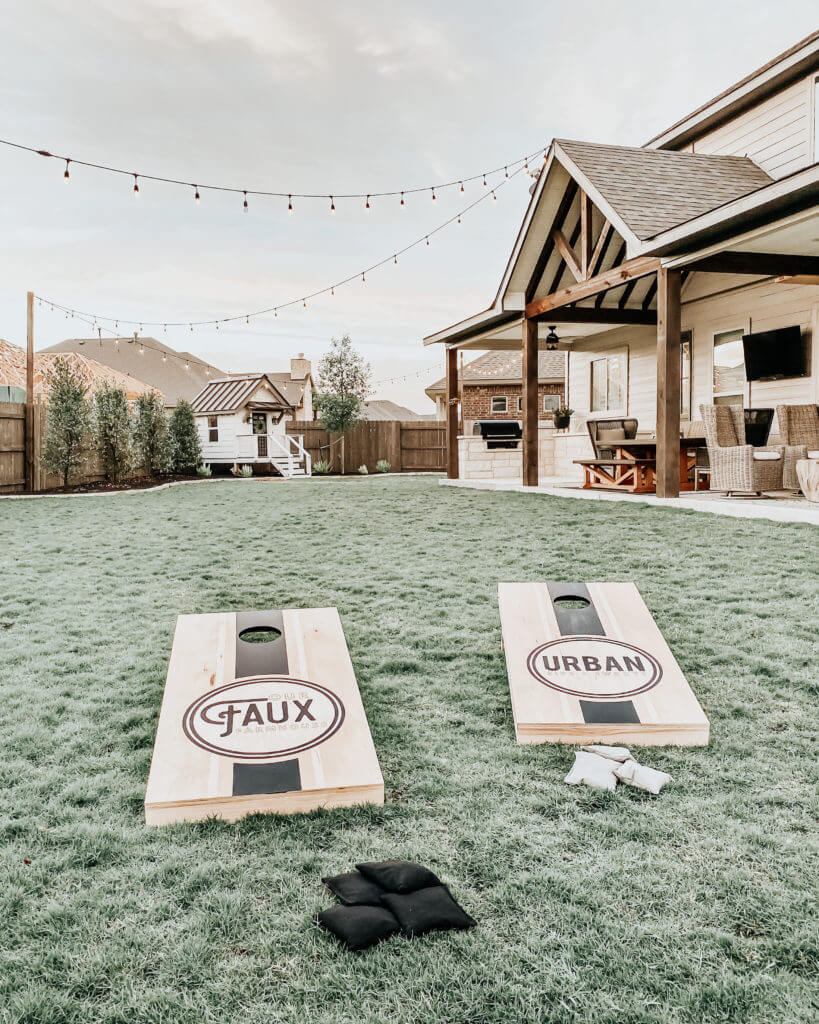
Our Faux Farm House has a cornhole board design from Holly that features some hand-painted designs aided with painters tape. The design features a few logos with a circle of tape around the logo. The crafter then used the tape to create lines, and filled in the sections with paint to create a 2-toned look made for their logos.
Collapsable Cornhole Board Plans
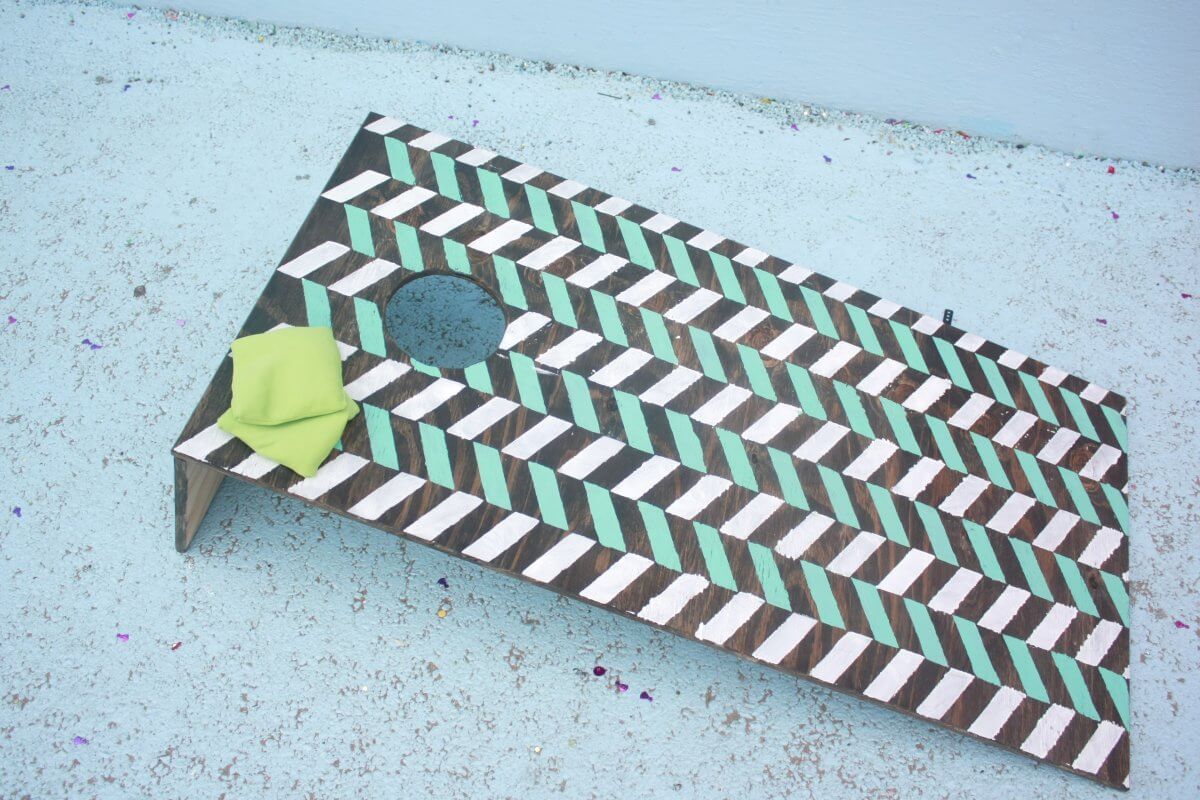
The blogger Amber Oliver has a DIY cornhole board that is different in dimensions than a standard board. Being much thinner, these boards wouldn’t hold up to a regulation check. However, her hand-painted diagonal hatching on the front of the board is a more complex design than we usually see.
Beginner Cornhole Board Plans
Although not a small business like our other features, Yellawood features a free cornhole design PDF that is well-made and easy to follow. Their website features a video going over the design and how to make it yourself. Feel free to adapt the plan as needed if you’d rather use recycled materials.
DIY Cornhole Game Set
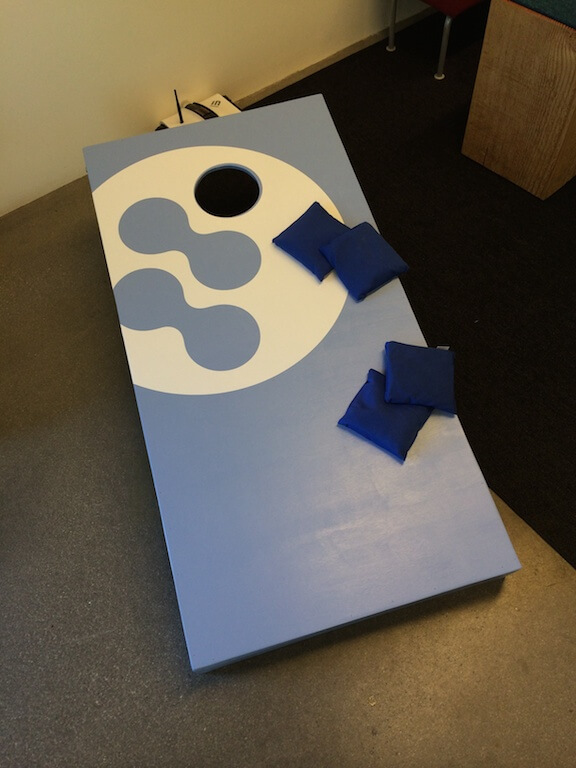
Andy from Stuff Andy Makes has a fun, off-center design for the paint that looks great. The article features a combination of design pictures and in-process photos to give you an idea of how the finished design looks. Andy also includes a lot of little details that you can change up to make your design stand out.
FAQ
What Is the Best Wood for Building Cornhole Boards?
Pine wood for the frame of the cornhole board is the most commonly used. Pine plywood tends to be used for the flat of the board as well. It is lightweight and flexible.
How Do You Make a Cornhole Board?
The basic steps to make a cornhole board are building the frame, attaching the legs, installing the board surface, cutting a hole for the bean bags, and then finishing the design with visuals of your choice.
How Do You Cut a Hole for a Cornhole Board?
The common way to cut a hole for a cornhole board is to measure out the regulation distance from the top and side edges. Then, you can use a compass and pencil to draw the circle for the hole. A jigsaw will cut through the plywood easily, so you can use one of these to create the hole using the circle you draw. If you want to make an oval hole, use an oval stencil to trace the shape and size you want it to be.

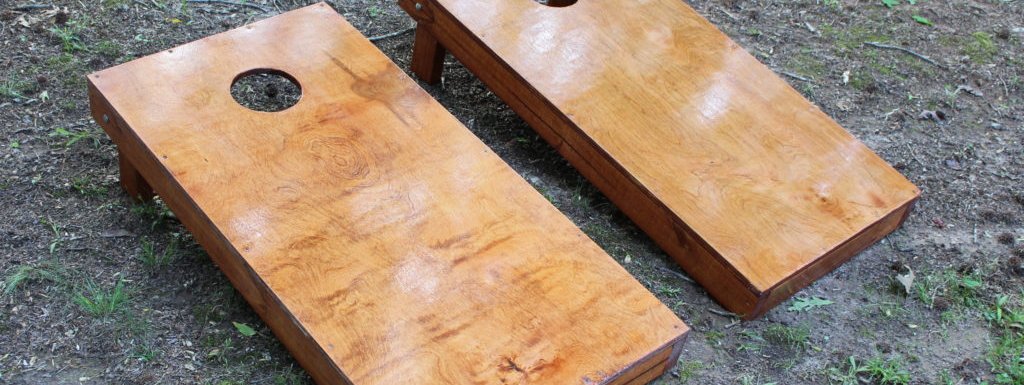

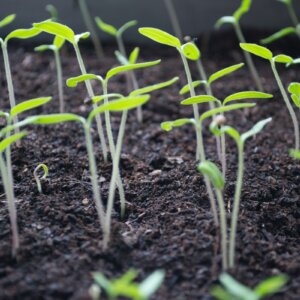



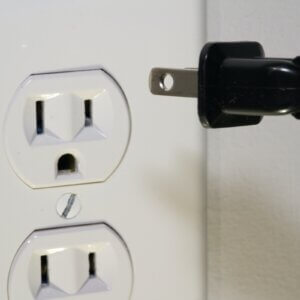





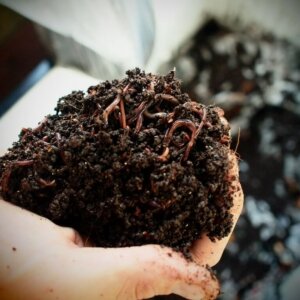



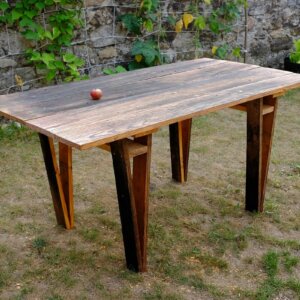
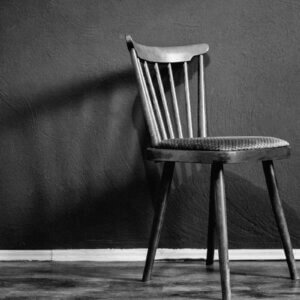

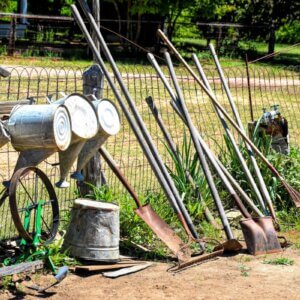


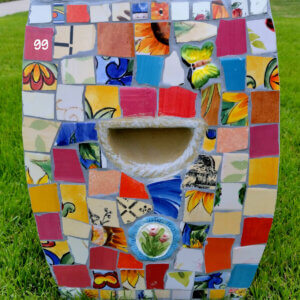
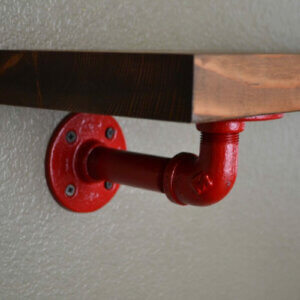
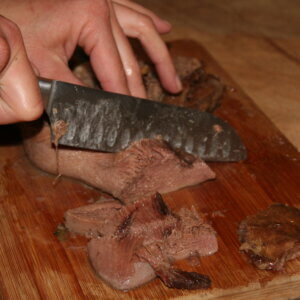




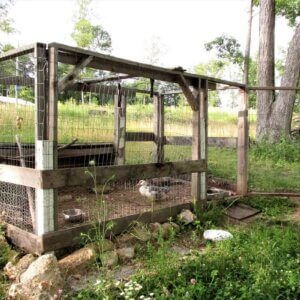


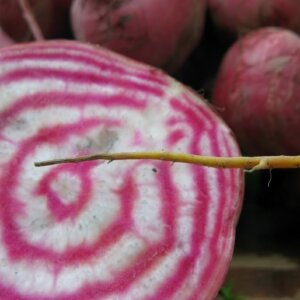

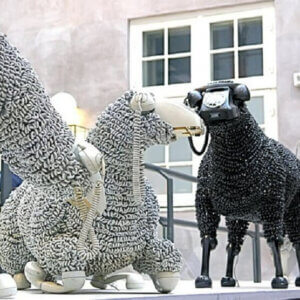



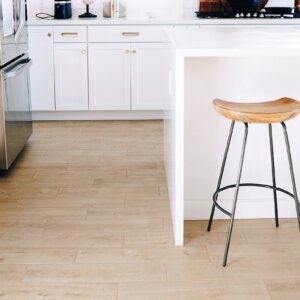
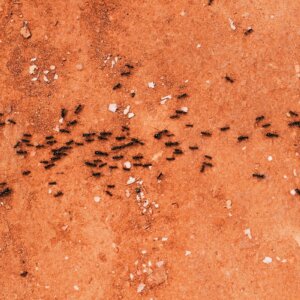
Photo/Attachment:
When cutting the hole I use router & milescraft circle guide found out it’s alot easier and cuts holes perfectly